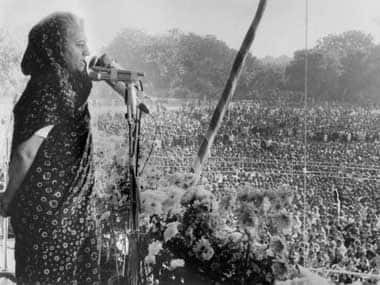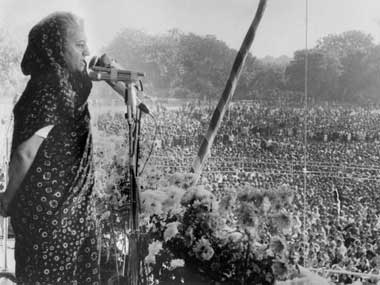by Vivek Bharadwaj Thirty years ago on this day, the Indian team was playing a one-dayer against Pakistan in Faisalabad. The Indian batsmen—led by Sandeep Patil and Dilip Vengsarkar—were in full flow and with just a few overs left, they were expected to set a challenging score for the hosts. People listening to the commentary were surprised when the broadcast was interrupted and listeners were put on standby for a special news bulletin. The All India Radio bulletin that followed did not give full details of the incident and the news reader merely announced that prime minister Indira Gandhi had been shot. But, as was the norm back then, listeners quickly tuned in to BBC and within a few hours the entire country knew the PM was dead. [caption id=“attachment_1781013” align=“alignleft” width=“380”]  Indira still remains the most enduring figure of Indian politics since independence: Getty images[/caption] Throughout that day and on the night that followed, most Indians felt that apocalypse was on the horizon. It was the age of slogans like ‘India is Indira’, and many who were awake that night could be forgiven for believing that her assassination was a major blow to the country. A few days after she was killed, VS Naipaul wrote an artcile titled ‘India after Indira’ for the Daily Mail and feared ‘nobody knows what will follow Mrs Gandhi’s assassination.” But he was optimistic that India was too large, too autonomous to collapse just like that. “One side of me is worried about the future of India. Yet at the same time I feel there’s a kind of intellectual autonomy…and that this, together with the great size of India, will keep it from chaos,” Naipaul wrote. The country has matured a lot since 1984 and it would now seem unimaginable that a PM’s death would have triggered fears about the future of the country. With time we have had the opportunity to analyse Indira and her 16 years in power dispassionately. Opinion on Indira will always remain divided. She is —so far— the only Indian politician to be revered, despised and feared with equal intensity. We can pillory Indira for foisting a dynastic culture in Indian politics, for promoting sycophancy and a totalitarian rule that thrived on the margins of dictatorship; we can remember her for the war with Pakistan, the Pokhran explosions, the green revolution and nationalisation of banks, or admire her for taking on her enemies both within her party (the Syndicate) and outside. Such were the inherent contradictions in her personality and politics that it is difficult to say if Indira Gandhi did more harm to the country than good. But still she remains the most enduring figure of Indian politics since Independence. So, why exactly do we remember her? What is her legacy? Here are the top three trends that have survived Indira in India’s politics: 1. Decisive Leadership: This is something Rahul Gandhi can learn from his grandmother. For good, bad or worse, Indira always believed in action. Her decisions were swift, bold and decisive. It can be argued that some of her decisions precipitated bigger problems—the Emergency and Operation Blue Star for instance—than they solved. In many cases it would have been more prudent for her to wait and weigh the consequnces of her decisions. Perhaps she was extremely impatient, it is possible that she always believed her instincts and it can be argued that Indira believed that her popularity gave her the moral authority to decide without fear; but we have to accept that Indira always had a plan ready. And once her mind was made up, nothing could stop her. 2. Scientific temperament: Indira, unlike many of her contemporaries in Pakistan and the Gulf, was neither a bigot nor a regressive leader. She was, like her father, a liberal politician with a predilection for pursuing scientific achievements. In his piece on Indira, Naipaul pointed out that India (under Indira) had grown “intellectually and industrially, and for a long time there has been a balance between rationalism, the life of the mind and the pull of old barbarism.” The nuclear explosions in 1974, the space programs of the 80’s and Rakesh Sharma’s journey on a Soviet spaceship established an Indian scientific spirit that is now entrenched deep into our psyche. 3. The power of slogans: In its obituary, the New York Times castigated Indira for her Quixotic promises to erase poverty and argued that India’s chronic and severe social problems actually burgeoned during her years in power. But, till the advent of Achche Din Aana Wale Hain, Garibi Hatao remained a compelling example of the power of a slogan to unite an electorate, though many of her critics pointed out that the slogans were mere noise. Veteran journalist BG Verghese was quoted in the NYT article as saying “The greater the success, the greater the bewilderment over what to do. Having emblazaoned Garibi Hatao on her standard, she did not conceptualize or carry it forward,” Verghese argued. Perhaps Narendra Modi can learn from this.
Such were the inherent contradictions in her personality and politics that it is difficult to say if Indira Gandhi did more harm to the country than good.
Advertisement
End of Article
Written by FP Archives
see more


)

)
)
)
)
)
)
)
)



